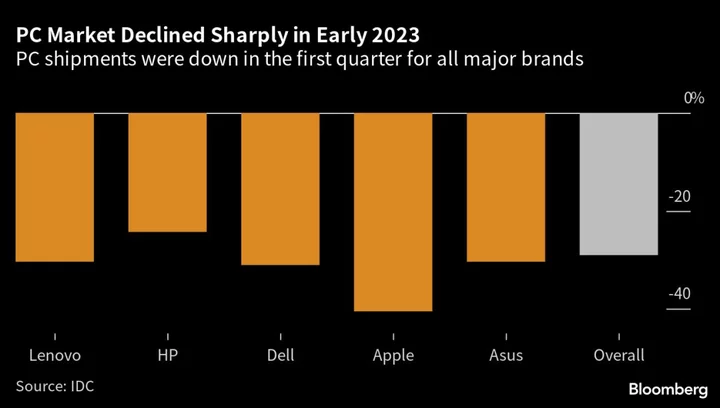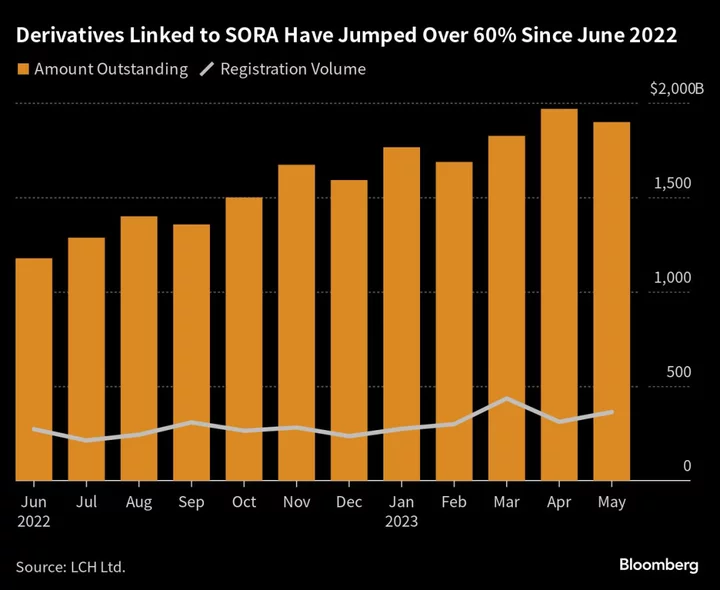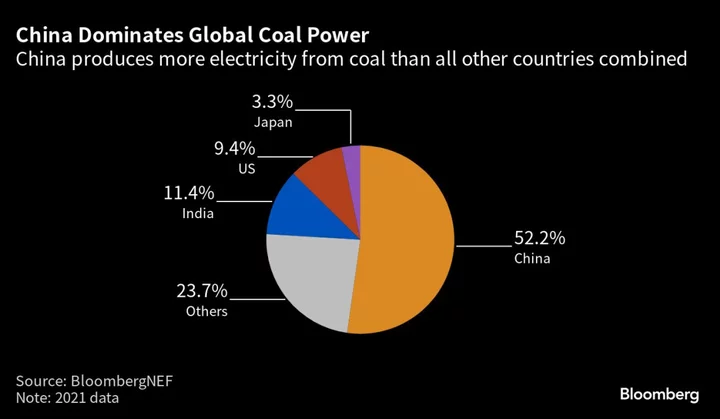PC makers from Lenovo Group Ltd. to Samsung Electronics Co. are pinning their hopes for reviving laptop sales on upgraded displays.
At the Computex show in Taiwan this week, every major local electronics brand showed off new laptop models with OLED displays, the same technology used in smartphones. Asustek Computer Inc., Acer Inc., Gigabyte Technology Co. and Micro-Star International Co. all expanded their portfolios, hoping to drive an upgrade cycle and revive flagging sales.
OLED produces more vibrant colors, greater uniformity and superior contrast compared to conventional LCD technology, but it uses more energy and comes at a higher cost. It’s become the universal standard on smartphones, after debuting on the highest-end devices, and Samsung’s display subsidiary has been advocating its proliferation to larger form factors.
“At Asus, we believe that OLED panels are truly the future of laptop displays,” Asus co-chief executive officer Samson Hu told Bloomberg.
The Taipei-based company, led by Hu and fellow engineer S.Y. Hsu, has a 55% share of the OLED notebook market today, having introduced its first such models two years ago. But it’s a small market: OLED represents about 3% of notebook shipments, according to Asus’ data.
Cost is a key issue: a 15.6-inch OLED panel commands a price 2.5 to 3 times higher than a comparable LCD screen, according to IDC analyst Annabelle Hsu. Companies pass at least some of that expense to consumers: an Asus Vivobook 15 with OLED and some other upgrades costs $699 versus $549 for the LCD model.
Part of the problem is that there’s a practical monopoly over the category: Samsung Display has more than 99% of the laptop OLED market. Asus’ co-CEOs said they hope suppliers like BOE Technology Group Co. or LG Display Co. enter the fray to drive down prices.
LG Display already makes even pricier MiniLED screens for Apple Inc.’s MacBooks and may be planning to enter the laptop-scale OLED business in response to clients’ requests, IDC’s Hsu said. Apple plans to move to OLED for its MacBook lineup, Bloomberg News has reported.
Read more: Apple Working to Add Touchscreens to Macs in Major Reversal
“Some obstacles exist regarding the technology,” IDC’s Hsu said. In the most advanced OLED displays, “LTPS technology is used because it has a quick response time and better color performance, but it is difficult to mass-produce for panels that are 15 inches or larger. This is causing production yield issues.”
For now, most PC makers are putting their efforts into selling OLED as a premium feature, with many of them seeking out Pantone certification for their color accuracy. Taipei-based MSI even introduced a 16-inch OLED laptop with Mercedes-AMG Motorsport branding at Computex.
Another laptop at the exhibition, Acer’s Swift Edge 16, collected a pair of best-of-show awards and showed how affordable large OLED laptops can be; its pricing starts at $1,300. Gigabyte’s Aero laptops also exhibited how thin and compact such laptops are, though the machines at the show floor indicated limited battery life. The power consumption of OLED, where every pixel is individually lit, is one of the major challenges of the technology.
Beyond Taiwan, Samsung Display is also working with Dell Technologies Inc., HP Inc., Razer Inc., Lenovo and the consumer-facing Samsung brand.
“I am expecting to see more OLED and MiniLED panels on laptops as PC vendors try to push through the post-pandemic lull in demand with more exciting products,” said industry analyst Avi Greengart. “OLED provides so much contrast and rich color, and that’s great for content creation and consumption.”









